Spider Monkey Reintroduction
Goal: Ensure the conservation of the reintroduced black-faced spider monkey population in the Tambopata National Reserve’s buffer zone through enhanced surveillance, boundary marking and local student training.
Overview
The project enhanced control and surveillance in the Kawsay Conservation Concession with regular maintenance, perimeter marking, and drone patrols, and monitored reintroduced spider monkeys using GPS technology. Local students received practical training in telemetry and biodiversity assessment, and a bridge was built to improve accessibility for conservation efforts. Various student-led research projects were also implemented and presented.

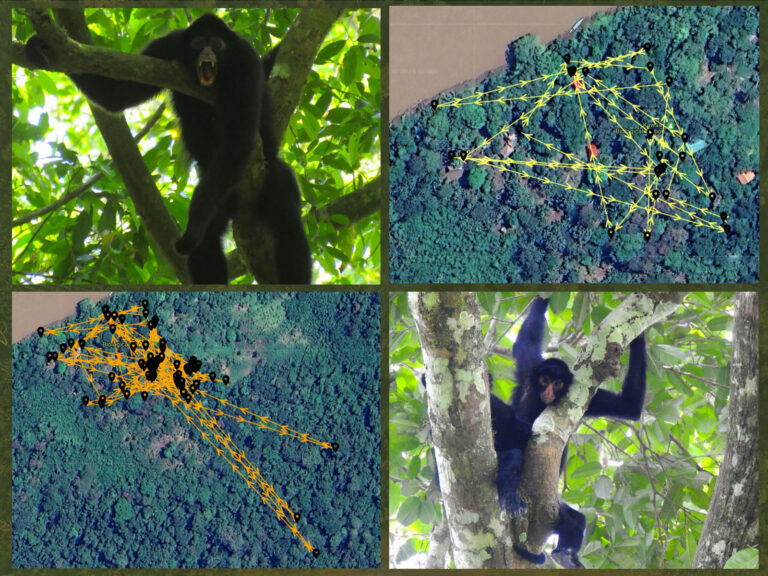

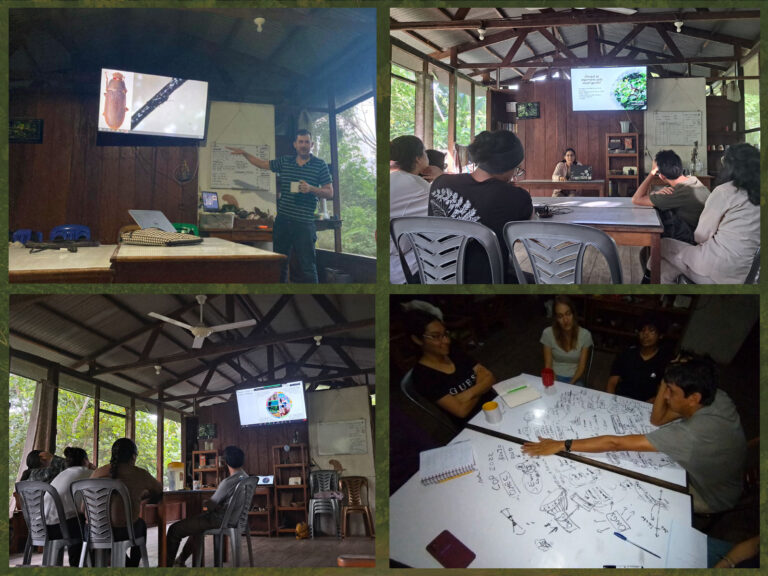
Biodiversity Importance of the Area
The Kawsay Biological Station is located in the buffer zone of the Tambopata National Reserve in the Madre de Dios region of Peru, near Puerto Maldonado. This area is one of the most biodiverse on the planet, serving as a critical transition zone between the Andes and the Amazon Basin.
The region hosts a remarkable variety of species, including over 1,200 bird species, 200 mammal species, and thousands of plant species, many of which are endemic. This high level of biodiversity is crucial for maintaining ecological balance and resilience, as diverse ecosystems are better able to withstand environmental changes and disturbances.
Importance of Spider Monkeys
The spider monkey is an endangered species. Preserving spider monkeys is crucial due to their role in seed dispersal, maintaining forest diversity and ecosystem health. Their conservation supports ecotourism, benefiting local economies and raising awareness about environmental issues. Additionally, studying spider monkeys enhances scientific knowledge of primate behavior and rainforest ecology, aiding broader conservation strategies.
What are we doing?
Since February 2022, we have focused on the following activities:
- Strengthening control and surveillance of the conservation area through regular maintenance, perimeter marking, and drone patrols, ensuring no new disturbances were detected.
- Monitoring and research of reintroduced spider monkeys, including behavior, diet, and movement tracking using GPS technology.
- On-site training and continuous education for local students, involving hands-on experience with telemetry, flora and fauna assessment.
- Construction of a bridge to improve accessibility within the concession area, facilitating better monitoring and conservation efforts.
- Presentation and implementation of various research projects by students, covering topics such as bird presence, tree conservation, and biodiversity.

The Kawsay Research Station
The station covers approximately 200 hectares and focuses on education, research, and conservation efforts. It provides opportunities for volunteers, interns, and researchers to engage in various conservation activities, including wildlife monitoring and habitat evaluation, to preserve this vital ecological area.
Infrastructure and equipment investments over the years
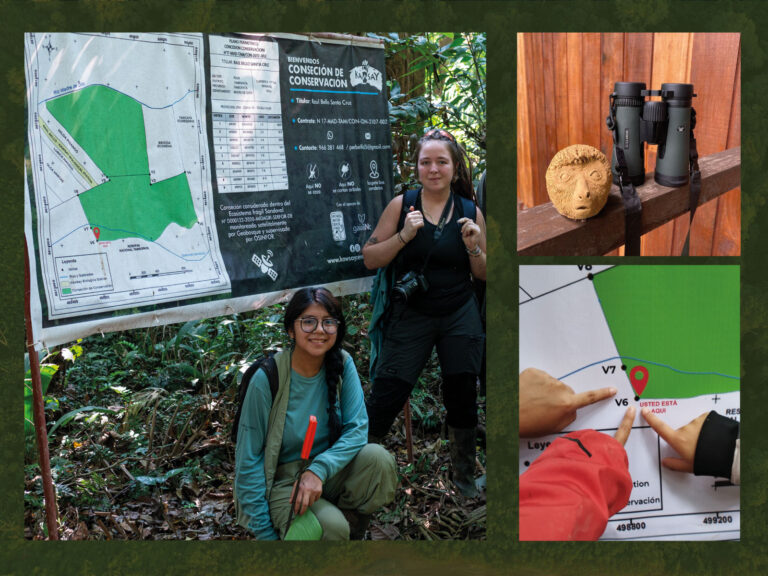
2022
Signalization of the Reserve Boundaries
Garmin GPS
Binoculars
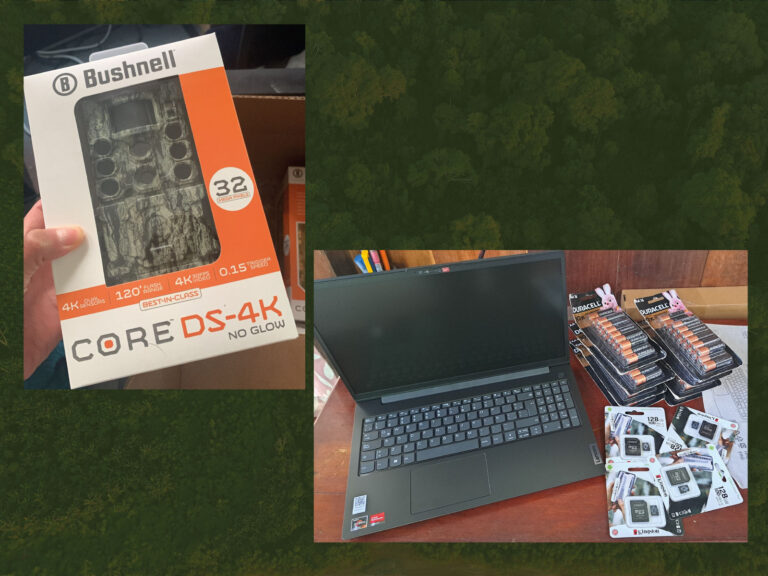
2023
Laptop
Trap cameras
SD cards
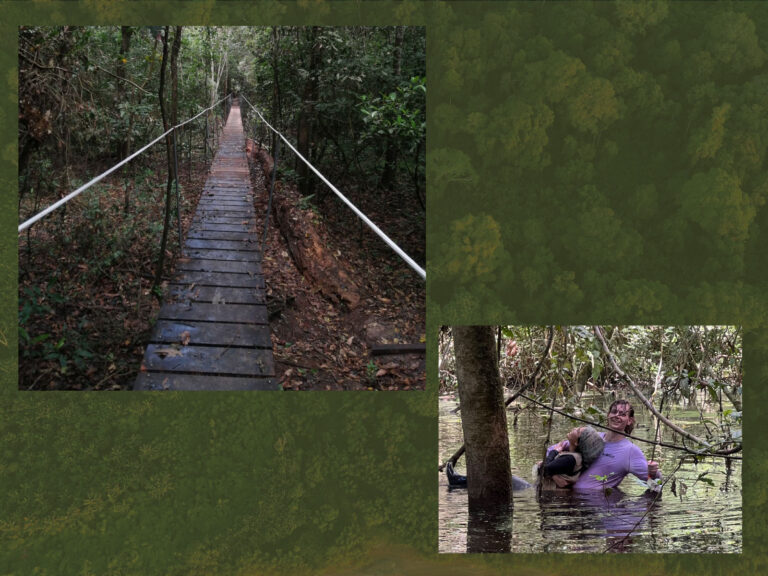
2024
80m bridge to enter the station.
Project Partners
This project is implemented jointly between gaia-liNc e.V. and Kawsay Biological Research Station. This project was made possible with the support and funding by Apenhaul Primate Conservation Trust.

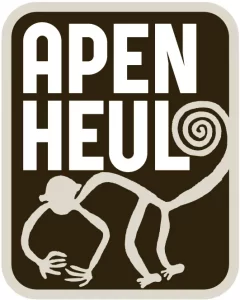

Send us a message sharing your or questions regarding this project for media outreach, capacity building, local support and more.